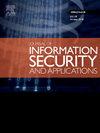PRAAD: Pseudo representation adversarial learning for unsupervised anomaly detection
IF 3.8
2区 计算机科学
Q2 COMPUTER SCIENCE, INFORMATION SYSTEMS
Journal of Information Security and Applications
Pub Date : 2025-01-11
DOI:10.1016/j.jisa.2025.103968
引用次数: 0
Abstract
As one of the typical means of anomaly detection, unsupervised reconstruction-based anomaly detection methods usually extract the normal representations and utilize the reconstruction error to detect the anomalies. The main framework is autoencoder. If the autoencoder has strong generalization ability, the anomalies could also be well reconstructed, resulting in model misjudgment. Therefore, we propose a Pseudo Representation Adversarial learning model for unsupervised Anomaly Detection (PRAAD). Specifically, we design a pseudo-representation-based data augmentation strategy to enrich latent distribution for capturing additional normal patterns through an adversarial learning strategy. Based on this, PRAAD could improve the confidence of normal reconstruction rather than abnormal reconstruction. Finally, we additionally consider the distance of the sample to the latent distribution to synthesize the anomaly score. Experimental results on real image and cybersecurity datasets show that PRAAD outperforms the state-of-the-art baselines.
求助全文
约1分钟内获得全文
求助全文
来源期刊

Journal of Information Security and Applications
Computer Science-Computer Networks and Communications
CiteScore
10.90
自引率
5.40%
发文量
206
审稿时长
56 days
期刊介绍:
Journal of Information Security and Applications (JISA) focuses on the original research and practice-driven applications with relevance to information security and applications. JISA provides a common linkage between a vibrant scientific and research community and industry professionals by offering a clear view on modern problems and challenges in information security, as well as identifying promising scientific and "best-practice" solutions. JISA issues offer a balance between original research work and innovative industrial approaches by internationally renowned information security experts and researchers.
 求助内容:
求助内容: 应助结果提醒方式:
应助结果提醒方式:


